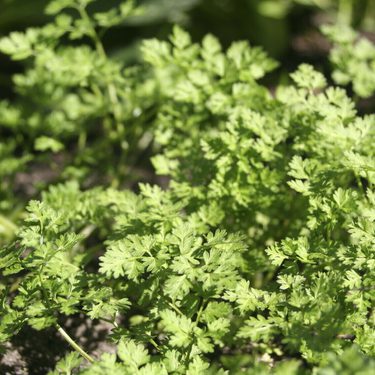
Chervil
| Growing calendar | |
|---|---|
| Sow outdoors | Late Apr-Sept |
| Harvest | Oct-Dec |
How to grow chervil
Sow chervil seed at regular intervals, 0.1cm deep in rows, thinning seedlings to 20cm apart. Choose well-drained, fertile soil in partial shade. Cover summer-sown chervil plants with horticultural fleece in autumn to prolong the harvest.
If you're growing chervil in pots, allow for adequate drainage and keep the soil evenly moist. As it prefers partial shade, chervil can also be grown indoors on the windowsill.
Harvesting and using chervil
Can crop throughout the winter. Pick chervil leaves before flowers open and when stems are about 10cm tall. Use fresh or store by freezing. Particularly good with eggs and cream sauces.
Tips on growing chervil
- Chervil plants dislike being transplanted so grow chervil from seed, sown direct.
- Water well in dry weather to help avoid plants bolting (flowering prematurely.
Seed Saving
Chervil self-seeds readily, but you can also collect flowerheads and place upside down in an envelope until they drop off. Dry completely and store for up to four years.
| Growing notes | |
|---|---|
| Difficulty | Easy |
| Germination time | 7-14 days |
| Average growing period | 6-8 weeks |
| Equipment needed | Horticultural fleece in autumn |
| Average plant size | 60cm tall, 30cm wide |
| Family group to grow with | Apiaceae: dill, fennel |
| Latin name | Anthriscus cerefolium |
| Key nutritional content | Dried: calcium, iron, zinc |